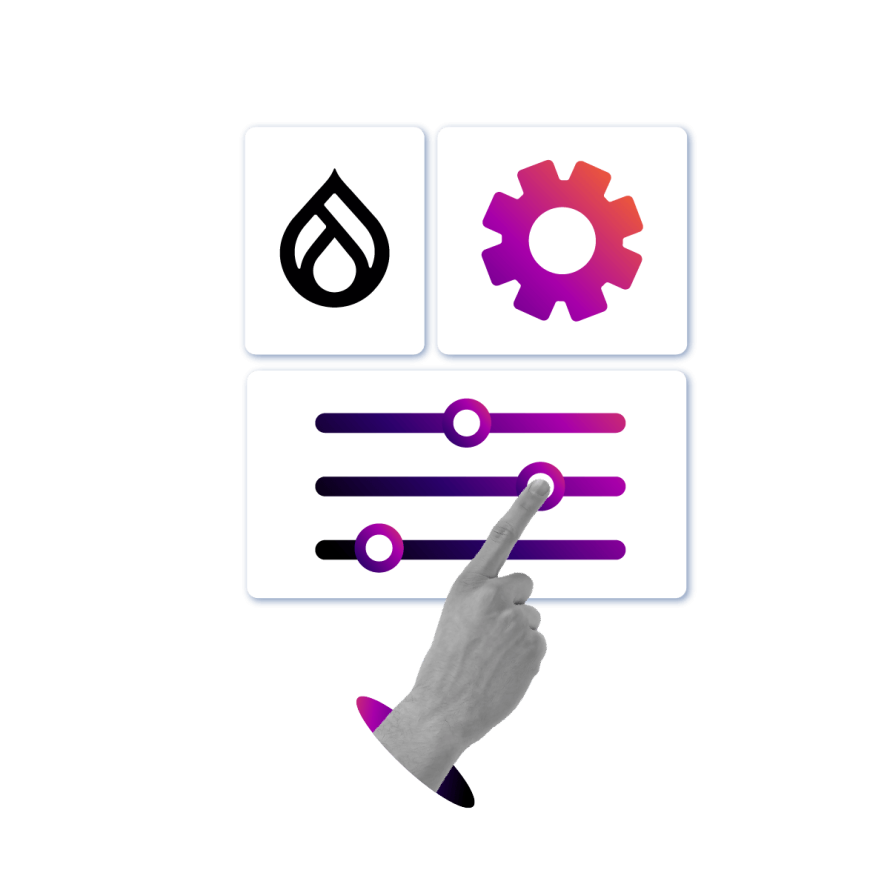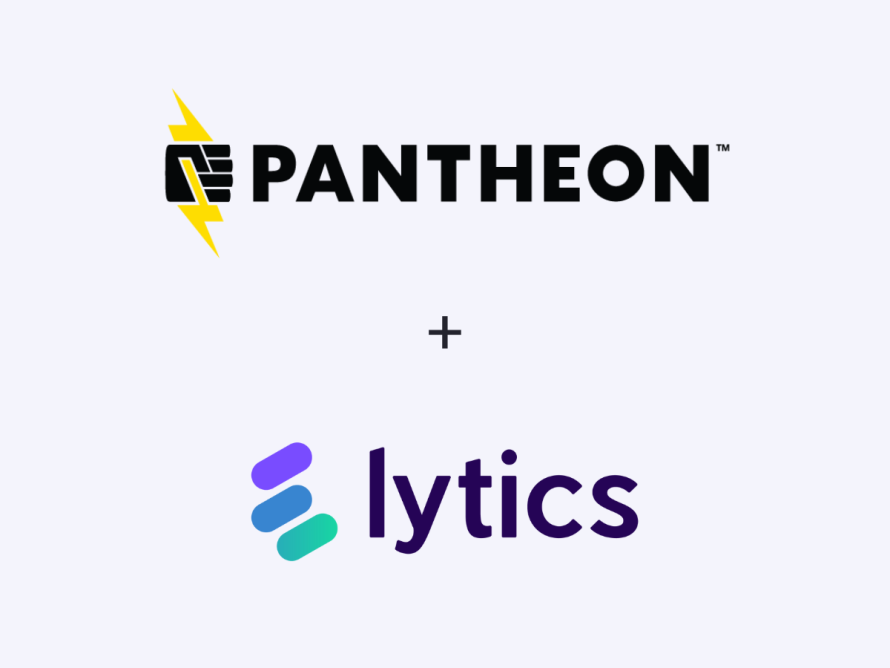Best Practices for Effective Drupal Personalization
There’s nothing like a personal touch – and the same can be said for websites. Personalization transforms the way visitors engage by delivering customized content and experiences tailored to individual characteristics, behaviors and preferences. With Drupal, you can create more meaningful interactions by personalizing content based on factors like geolocation, browser history, search behavior, user actions, device type, roles and even UTM parameters from marketing campaigns.
This guide explores the best practices for implementing personalization in Drupal. We’ll cover key modules that make personalized content delivery effortless and dive into strategies for maintaining site performance while enhancing the user experience.
Benefits and Challenges of Personalization
Image

- Enhanced user experience: Tailored content makes the user experience more relevant, leading to higher satisfaction and loyalty as visitors feel their needs are being met directly.
- Improved conversion rates: Personalized content resonates better with users, which helps guide them through the buyer’s journey, ultimately boosting conversion rates.
- Higher customer retention: By offering content that consistently speaks to user interests, personalization encourages visitors to return, increasing retention over time.
- Better use of data: Personalization allows businesses to tap into their data more effectively, crafting targeted strategies that engage specific audience segments with precision.
Even though WordPress is more popular in the media industry…we decided to stick with Drupal. We knew Drupal would allow us more sophisticated development and personalization. We can do more with it.”
- Bartlomiej Swojak, Web Product Manager at Tygodnik Powszechny
However, it's important to be aware of the challenges that come with customizing content:
- Data privacy concerns: With regulations like GDPR, using personal data for customization raises concerns about security and privacy, requiring careful handling of user information.
- Technical complexity: Implementing personalization requires advanced tools and a solid understanding of Drupal and user behavior, making it resource-intensive.
- Performance issues: Delivering personalized content can slow down site performance if not properly optimized, as it demands additional processing power.
- Content management overhead: Managing personalized content for different audience segments adds a layer of complexity to content creation and maintenance.
Top Drupal Modules for Personalized Content Delivery
1. Personalization
The Personalization module enables websites to deliver tailored content to users based on factors like location, interactions and search behavior. This helps make the user experience more relevant and aligned with individual preferences. Its main features include:
- Geolocation personalization: The module can identify a user’s location through their IP address (using the Telize GeoIP service) or by requesting their location via the HTML5 geolocation API. This data helps in serving location-based content.
- Search-based personalization: Content can be personalized based on the search keywords users enter to find your site (from Google, Bing or even internal searches). Keywords are mapped to taxonomy terms, improving the accuracy of content suggestions.
- Taxonomy-based personalization: The module tracks user interactions with content tagged with specific taxonomies, scoring their interests to build a personalized profile for more targeted content delivery.
2. Smart Content
Smart Content allows site administrators to customize the content displayed to different users based on conditions like user authentication status, device type, language preferences and more. The important features of this module are:
- Smart Content Blocks: These customizable blocks allow you to display different content depending on user conditions. For example, mobile users could see one version of a page, while desktop users see another.
- Smart Content Browser: Administrators can tailor content using browser-based conditions, like detecting if a user is on a mobile device or identifying their preferred language.
- Smart Content Data Layer: This tool collects data on how Smart Content is presented to users, passing that information to platforms like Google Tag Manager for better analytics and user behavior tracking.
- Smart Content A/B testing: You can experiment with different content versions to see which performs better, using data-driven insights to refine your content strategy.
- Smart Content UTM: This feature supports UTM parameters (commonly used in marketing campaigns). UTM values are stored as cookies, enabling content personalization based on how users arrive at the site.
- Third-party integrations: The module integrates with external services like Demandbase and 6sense, which use their APIs to enhance content personalization with richer data.
3. Fivestar Recommender
The Fivestar Recommender module pretty much does what it says on the tin. It personalizes content recommendations based on user ratings via the Fivestar module, which allows users to rate content using a star system. It offers two types of recommendations:
- “Users who liked this also liked” shows users a list of content nodes that have been similarly rated by other users, offering recommendations based on collective ratings.
- “Recommendations for you” provides personalized content recommendations based on the user’s previous ratings, making the browsing experience more relevant and engaging.
While it's tempting for developers to create their own personalization tools, this often leads to unforeseen issues like compatibility, performance bottlenecks and lack of scalability. It’s more efficient to use tried-and-tested third-party tools that integrate seamlessly with Drupal.
Maintaining Performance While Implementing Personalization
One of the biggest challenges when implementing personalization is making sure it doesn’t slow down your website’s performance. Personalized content is dynamic and harder to cache with traditional methods. This can frustrate users with slow load times if not handled correctly.
CDN tuning is essential for optimizing performance when serving personalized content. At Pantheon, we provide high-performance Drupal hosting that solves this issue by using "edge" computing capabilities through our Advanced Global CDN. This allows personalized content to be delivered directly from the edge, reducing latency and keeping your site fast.
To maintain performance while delivering personalized content, it's important to implement backend caching techniques like Redis. These solutions enable the storage and quick serving of personalized elements. Pantheon’s Global CDN and built-in caching layers further optimize content delivery, resulting in fast user experiences.
Regular performance audits are equally important in maintaining a fast Drupal site. Pantheon’s performance monitoring tools can help pinpoint areas for improvement. Reducing the number of personalized elements on each page can also keep load times short, ensuring that users aren’t left waiting.
Efficient resource management is another must when maintaining performance. By offloading resource-intensive personalization tasks to background processes or using asynchronous operations, you can lighten the load on your site. Pantheon’s scalable infrastructure is designed to handle traffic spikes, making it an ideal solution for supporting personalized experiences, even during high-traffic periods.
Finally, continual monitoring and testing of key performance metrics – such as time to first byte (TTFB) and overall page load times – is essential. Regular load testing, especially after adding new personalized features, helps identify bottlenecks and ensures your site remains fast and efficient!
Pantheon and Lytics Personalization
Image

Pantheon has teamed up with Lytics to offer customers free access to Lytics' Personalization Engine, allowing web teams to quickly implement powerful personalization features. This partnership combines Pantheon’s high-performance infrastructure with Lytics' data-driven capabilities, making it easier than ever to deliver personalized experiences at scale.
Real-Time Personalization
Lytics enables real-time personalization, letting you tailor each visitor’s experience based on their behaviors and interests. By surfacing relevant content and product recommendations, you can engage users on a personal level and increase the likelihood of conversions.
“We’re serious about helping teams rethink their approach to customer data and digital experiences. This partnership will radically democratize personalization and together we can help companies find their path to a first-party data strategy,” said Josh Koenig, Co-founder and Chief Strategy Officer, Pantheon
Simplified Implementation
With Lytics, Pantheon customers can have personalization up and running in as little as 30 days. This is a significant improvement over the typical resource-heavy personalization projects. The direct integration between Pantheon and Lytics streamlines the workflow, allowing editors to easily deliver audience-specific content using a turnkey solution designed for both Drupal and WordPress sites – without any added costs.
We believe we can help teams get more value out of their existing sites, a key tenant of our WebOps philosophy!”
- Josh Koenig, Co-founder and Chief Strategy Officer, Pantheon
Robust Profiles and Behavioral Insights
Lytics begins building detailed profiles for both anonymous and known visitors as soon as it’s activated, with zero effort required. By analyzing user behavior and leveraging proprietary behavioral scores and interest attributes, Lytics delivers actionable insights that fuel more personalized and meaningful user experiences.
Preparing for a Cookieless Future
As third-party cookies phase out, the integration with Lytics helps Pantheon customers transition smoothly to using first-party data. With both Pantheon and Lytics built natively on Google Cloud Platform, the tools are ready to take advantage of Google’s Privacy Sandbox and future innovations like Generative AI developments.
Personalization vs Localization
When it comes to delivering tailored experiences on your website, personalization and localization each play a unique role. While personalization focuses on individual user preferences and behavior, localization adapts content to align with the geographical, language and cultural context of your audience.
Localization and personalized regional content are incredibly important as site abandonment on mobile is much higher than on desktop. Getting a Florida menu in front of a Florida customer and fast is what will guarantee a conversion.”
- Anita Menedez, CIO at Kwall agency working on Hungry Howie’s sites.
Personalization
Personalization delivers content that is specific to each user's behavior, preferences and data. For example, product recommendations based on a user’s previous browsing history are a prime way to engage visitors with content they find relevant.
Localization
Localization adapts your site’s content based on geographical location, language and cultural factors. A common example is showing a website in a user’s native language and offering region-specific promotions or pricing.
But what are the main differences?
For a truly global, user-centric experience, blending personalization with localization can create a better interaction for your audience.
- Personalized localization combines personalized content with localization to provide users with relevant recommendations while ensuring the content is culturally appropriate. For instance, an e-commerce site can offer product suggestions based on browsing history while displaying prices in the local currency and in the user’s preferred language.
- Segment-based approaches can segment your audience using both behavioral data and geographical or cultural factors. This allows you to deliver content that is not only personalized but also aligned with regional holidays, events or preferences.
- Adaptive content strategies adjust dynamically based on both the user’s personal data and their location. You can customize offers, imagery or even the tone of your content to match local tastes while keeping the experience personal.
Pantheon’s platform provides the tools and infrastructure needed to support both personalization and localization strategies. With Pantheon, you can deliver complex, tailored experiences without sacrificing speed or reliability.
Tailoring Your Drupal Site With Pantheon
Delivering relevant, personalized experiences is essential for engaging users on a deeper level. Achieving this requires the right tools and infrastructure to make sure your site performs well without sacrificing user satisfaction.
Pantheon provides a powerful platform built to support the intricate demands of personalized Drupal sites. With advanced caching mechanisms, a global CDN and integration with Lytics, Pantheon allows you to deliver fast, personalized content efficiently and effectively.
Whether you're targeting individual users or global audiences, Pantheon’s infrastructure means your site stays fast, scalable and responsive as personalization efforts grow. Explore how Pantheon can help create a high-performance Drupal site that meets your audience's unique needs!